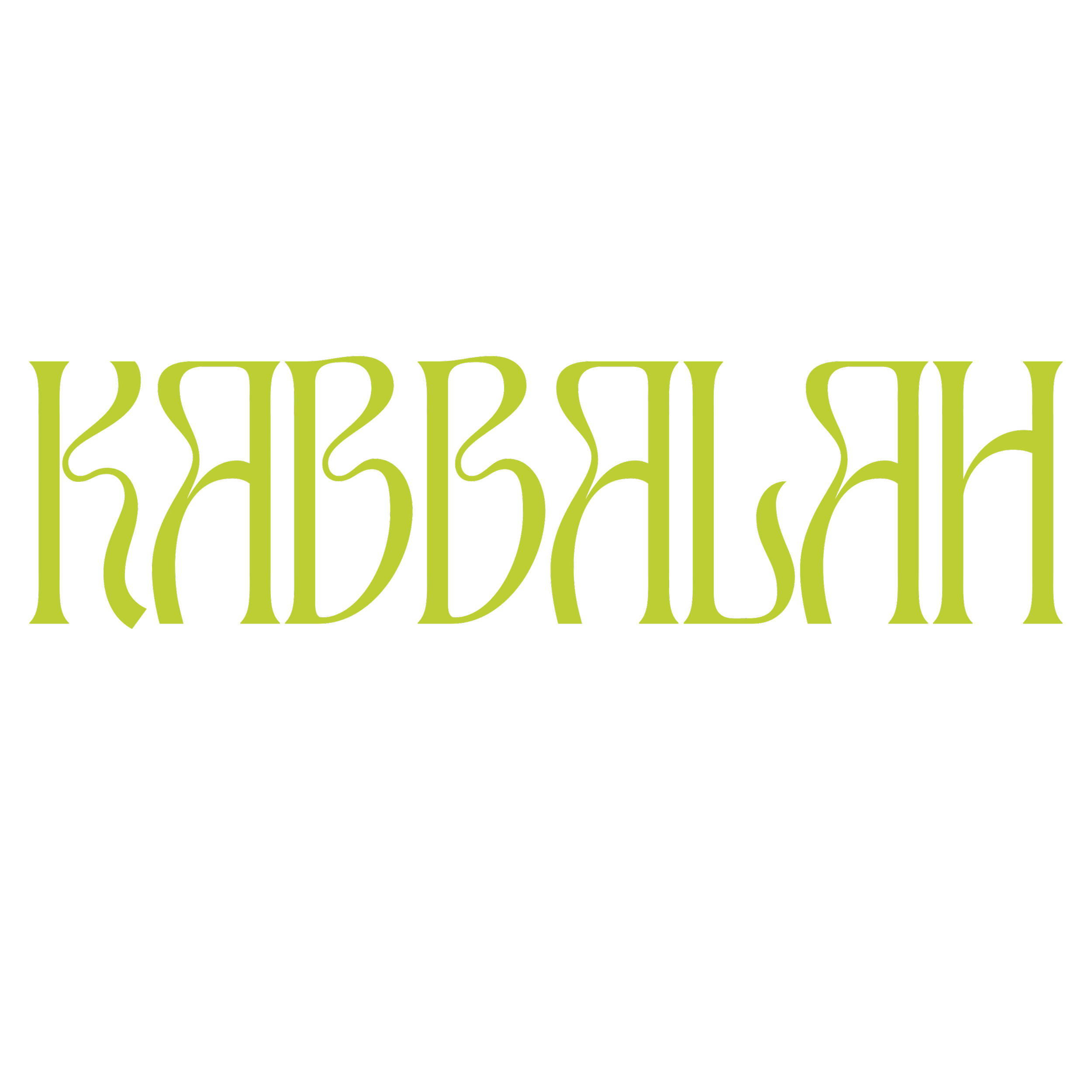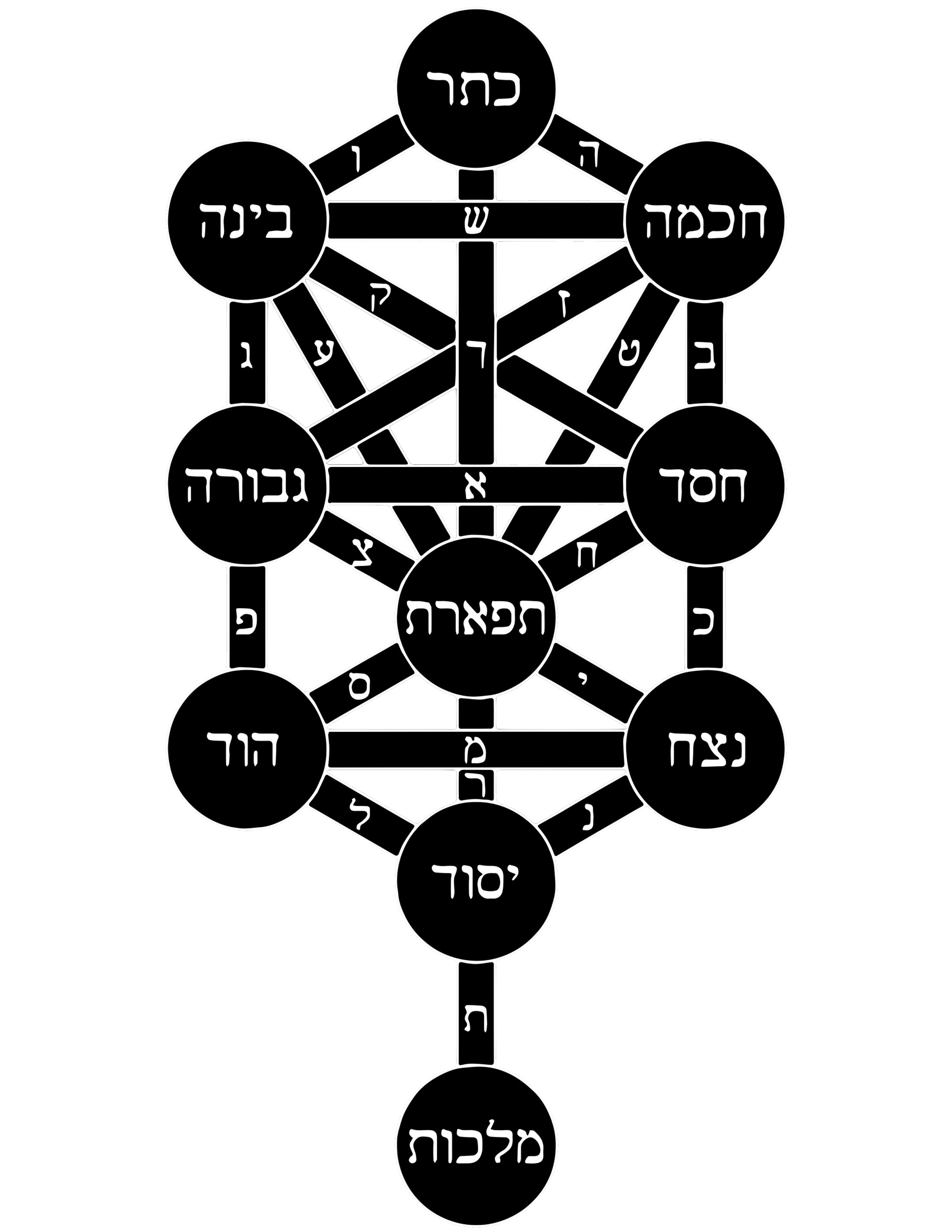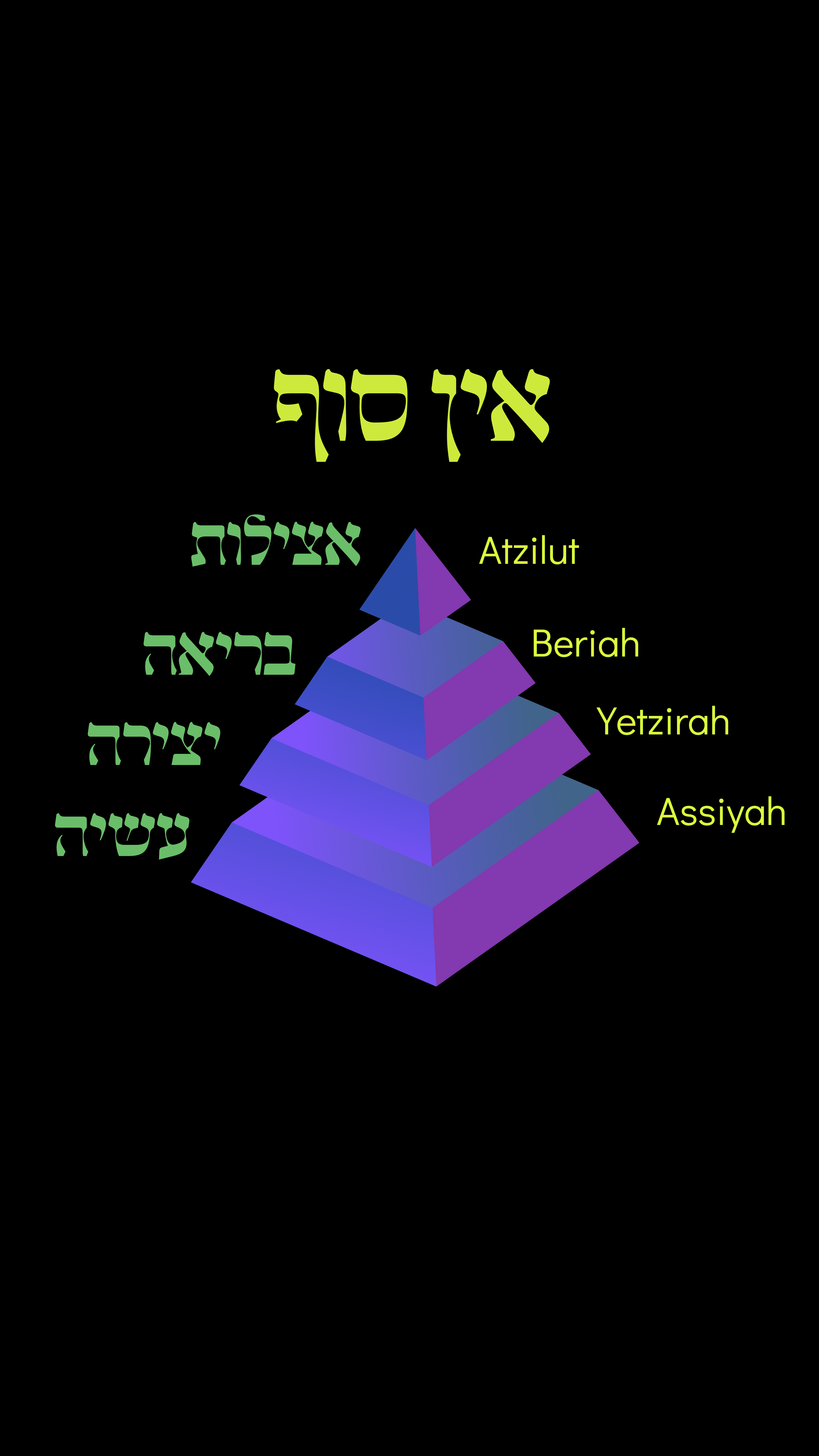Kabbalah, which means "to receive" in Hebrew, is the ancient mystical tradition revealed to the prophets through direct encounters with Angels and the heavenly realms. Rooted in these direct mystical experiences, Kabbalah offers an astonishingly detailed exploration of the higher worlds, the sefirot (divine emanations), and the process of creation itself. Because the higher levels of Kabbalah deal with Angelic communication and the ascent to the heavenly realms, it is mind bending in nature.
The Framework of Kabbalah
Kabbalah provides us with a structured map of reality, encapsulated in three main frameworks:
The Sefirot: The Dimensions of Consciousness
The ten sefirot are the emanations of divine energy that form the blueprint of creation. They guide us in understanding the interplay between divine qualities (such as wisdom, compassion, and strength) and how these qualities manifest in the physical and spiritual worlds.The Tree of Life
The sefirot are often depicted as a tree—a dynamic, interconnected system of channels through which the Infinite Light flows. This tree is both a map of the cosmos and a guide to the inner workings of the human soul.The Four Worlds
Kabbalah divides existence into four spiritual realms:Atzilut (Emanation): The world of pure divine light.
Beri’ah (Creation): The world of divine thought.
Yetzirah (Formation): The world of emotions and spiritual beings.
Asiyah (Action): The world of physical reality.
These worlds teach us how spiritual energy descends and is revealed step by step, enabling us to ascend and connect to higher dimensions.
Mystical Insights and Co-Creation
Kabbalah is also a lens through which we can understand the deeper meanings of Torah and mitzvot. Every letter, word, and story in the Torah contains layers of wisdom alluding to the divine structure of the universe.
Kabbalah and Personal Transformation
Kabbalah is a journey of self-transformation. It challenges us to rise above the ego to shift from being receivers for ourselves alone to becoming givers and channels of divine light. By doing so, we align ourselves with the purpose of creation and experience the profound joy of unity with the Creator.
There are mainly three different categories of Kabbalah. Most Kabbalah studied today, even at the rabbinical universities, is theoretical. Theoretical or philosophical Kabbalah involves a lot of reading and contemplation of texts like the Zohar or the Sefer Yetzirah.
Meditative Kabbalah lifts off of the page of the texts and deals more in tangible direct mystical experience. Certain Amulets, Divine names, and other kabbalistic tools may be utilized to achieve varying degrees of ascent.
The last category is magical Kabbalah, in which the practitioner seeks to actually engineer specific outcomes in the material world through manipulation of the forces in the higher realms. Magical Kabbalah has historically been cautioned against, as one must really know what they are doing before dabbling in such a serious art. The practitioner of magical kabbalah must also be righteous and pure intentioned because of the karmic liabilities involved with tampering with creation in this way.
It should be noted that there is another magical system developed in the West called Qabalah. This system, popularized by figures such as Aleister Crowley and other Western occultists, diverges significantly from traditional Jewish Kabbalah. Unfortunately, the popularity of Qabalah has blurred the lines for many unfamiliar with the differences between these traditions. For Jews seeking spiritual growth and understanding, it is extremely important to study authentic Jewish Kabbalah, rooted in the Torah and passed down through generations of Jewish sages. Esteemed sources such as Aryeh Kaplan, the Baal HaSulam, the Baal Shem Tov, and Rabbi Yitzchak Ginsburgh provide a solid foundation for exploring the depth and beauty of this ancient wisdom.
The misuse or misapplication of either Kabbalah or Qabalah can lead to harmful consequences, especially for individuals not grounded in genuine intention or proper guidance. Mysticism delves into profound and hidden aspects of existence, which can attract individuals who may not be prepared for its intensity or complexity. The higher teachings of Kabbalah do have a kind of “schizophrenic-esque paradoxical nature” which may exacerbate mental illness in those inclined to such dispositions. For this reason, studying the higher levels of Kabbalah have been historically protected and reserved only for students who are ready. The story of the four rabbis entering Pardes embodies this warning- read about it here.
All that said, Kabbalah supplies an elaborate map of reality and the mechanisms of consciousness, which the Kabbalist can utilize to tangibly perceive the higher worlds (heavenly realms), and the ultimate Oneness of all existence.
The sefirot are many things; but on one hand they are dimensions of consciousness, both in the macrocosm of creation and within the microcosm of the human soul. They are the blueprint of reality, the archetypes of psychology, and the structure by which the Creator extends Its essence into the created realm. These dimensions exist within us, reflecting the reality that "man is a microcosm of the entire universe."
From Ein Sof: Manifestation and Perception
Many conceive of the flow of divine light into the physical space as a linear descent—Ein Sof extending downward through the sefirot until reaching our physical reality, the sefirah of Malchut. This is true in one sense, but it is also incomplete. Such a view might lead one to imagine the Divine as distant, separate, or external. In truth, manifestation is not so much a "descent" as it is an emergence—a revelation of what already exists within.
Creation unfolds not from "above to below" in a spatial sense, but from within to outward. The Infinite is not external to us; it is the core reality, concealed within every layer of existence. One ascends their consciousness to the higher spiritual worlds by moving increasingly inward…
Inner and Outer Dimensions
When we speak of dimensions of consciousness, the movement from within to without parallels the process of realizing latent potential:
In thought, we hold infinite possibilities within our mind (Keter).
Through speech (associated with Tiferet and Yesod), we refine and articulate these potentials.
Finally, through action (Malchut), the innermost essence becomes manifest in the physical world.
This inner-to-outer flow mirrors the process of creation, which begins with divine will and culminates in tangible reality. The sefirot, in this sense, are not merely stages of materialization but states of consciousness that exist simultaneously. Our task is to expand our awareness, moving from the constricted perception of Malchut outward to the expansiveness of Keter, thereby reconnecting with the Infinite Light.
Implications for Co-Creation
We often think of "creating reality" as bringing something external into being. In truth, we are revealing what is already inherent within the divine blueprint. The "descent" is not a movement of something foreign into this world, but a progressive unveiling of the divine essence concealed within. As we align our inner sefirot with their divine counterparts, the boundaries between "Creator" and "created" blur, and we become conscious participants in the eternal process of creation.
Unity and the Endless Path
The more we understand that the sefirot map the inner dimensions of consciousness, the more we see that there is no real separation between above and below, within and without. All is one. Creation is the process of emanation and return, where we reveal the Infinite Light in the finite vessel.
-
It all begins with an idea. Maybe you want to launch a business. Maybe you want to turn a hobby into something more. Or maybe you have a creative project to share with the world.
-
It all begins with an idea. Maybe you want to launch a business. Maybe you want to turn a hobby into something more. Or maybe you have a creative project to share with the world.
-
It all begins with an idea. Maybe you want to launch a business. Maybe you want to turn a hobby into something more. Or maybe you have a creative project to share with the world.






